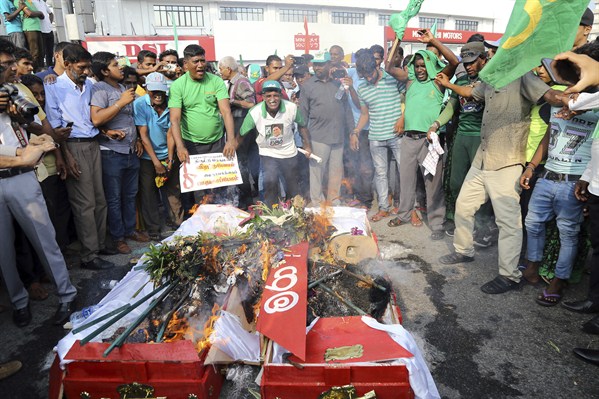The recent bout of unrest in Sri Lanka, sparked by President Maithripala Sirisena’s unexpected decision to fire the prime minister, concluded fairly peacefully. But many of the factors that have destabilized Sri Lankan politics in recent years remain unresolved—and will likely lead to more uncertainty in 2019.
COLOMBO, Sri Lanka—For many Sri Lankans, the country’s recent political turmoil came on so quickly they couldn’t possibly have prepared for it.
Rami Singh, a delivery driver in his 20s, recalls barreling through this city’s hectic traffic on the night of Oct. 26 when, suddenly, he had to slam on his brakes to avoid hitting a crowd of protesters that had gathered outside Temple Trees, the British colonial-era complex surrounded by white walls that serves as the prime minister’s office and residence. “There were hundreds of people out on the street,” he says. “They were shouting and chanting, and I heard one of them say they had come to protect the prime minister, and that there had been a coup.”

